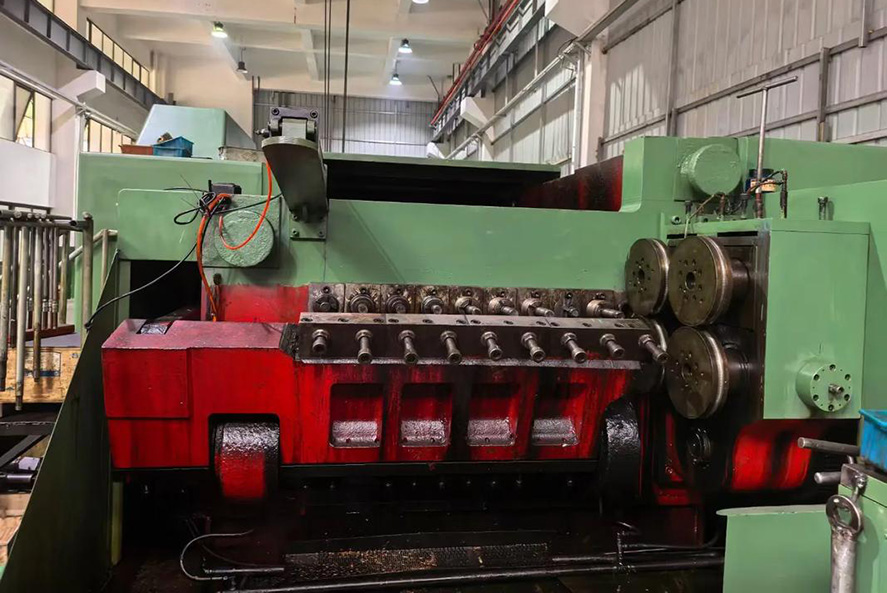
In modern manufacturing, cold heading is widely used in the production of bolts, nuts, rivets, and other high-strength metal parts. Compared to traditional CNC Turning, cold heading technology offers significant advantages in terms of increased efficiency, reduced costs, and improved product quality. With the growing demand for high-performance fasteners and precision components, cold heading is becoming a key development in the metal forming industry.
What is cold heading?
Cold heading is a room-temperature metal forming process. A multi-station cold heading machine applies high pressure to a metal blank, rapidly deforming it within a mold to achieve the desired product shape. This method eliminates the need to heat the workpiece and achieves the desired shape without altering the metal's microstructure. It is widely used in industries such as fasteners, mechanical parts, and automotive parts.
The Difference Between Cold Heading and Traditional CNC Turning
Traditional machining methods often reduce material to achieve part shape, while cold heading directly forms the part through pressure, eliminating material waste and significantly improving production efficiency and part consistency.
Core Advantages of Cold Heading
1. High Material Utilization
During the cold heading process, virtually no chips are generated. The metal blank is almost completely utilized after being formed by the die, achieving a material utilization rate of over 85%, effectively saving raw material costs.
2. Extremely High Production Efficiency
Cold heading is suitable for large-scale automated production. A single cold heading machine can produce hundreds of parts per minute, far exceeding the efficiency of turning or milling. It is the preferred process for mass production of fasteners and small metal parts.
3. Higher Product Strength
Because cold heading is a cold working process, the metal undergoes work hardening during the forming process, which improves the mechanical strength and fatigue resistance of the part. It is widely used in structural components with high load-bearing requirements.
4. Excellent Product Precision and Surface Quality
Processed with high-precision dies, cold-headed parts exhibit excellent dimensional consistency and surface finish, significantly reducing subsequent processing and handling steps, saving time and labor costs.
5. Wide Range of Applications and Strong Forming Capabilities
With technological advancements, cold heading is no longer limited to screws with simple head shapes. It can now be used to manufacture complex, multi-level parts, meeting the custom needs of various non-standard fasteners and special-shaped metal parts.

Typical Applications of Cold Heading
Cold heading is suitable for the manufacture of both standard and non-standard parts across a wide range of industries. The following are common applications:
Automotive: High-strength parts such as engine bolts, chassis nuts, and transmission fasteners.
Construction: Long screws, heavy bolts, and anchors for structural fastening.
Mechanical Manufacturing: Small shafts, pins, connectors, and cylindrical pins.
Hardware: Common tool components such as screws, sockets, punches, and rivets.
Electronic and Electronics: Precision small parts such as micro fasteners and terminal blocks.
These industries place high demands on product consistency, durability, and cost control, and cold heading precisely meets these requirements.
Future Trends in Cold Heading
With the continuous advancement of industrial automation and intelligent manufacturing, cold heading processing is developing towards multi-station, integrated processing, extended mold life, and complex forming capabilities. In the future, more companies will adopt fully automatic cold heading equipment to achieve high-speed, high-precision, and high-stability mass production.
At the same time, growing environmental awareness is also driving the widespread application of cold heading technology. Since cold heading does not require a heating process, it effectively reduces energy consumption, aligning with the industry's development direction of green manufacturing.
Summary: Cold heading is a reliable metal forming solution.
For manufacturers seeking high efficiency, low cost, and high-strength metal parts, cold heading is a preferred production method. Whether it's standard fasteners or complex custom parts, cold heading provides a stable and efficient solution.If you are looking for a reliable cold heading manufacturer or require custom cold heading products, please contact us for more information about cooperation.
We will respond within 24 hours.
Whats App number: +86 18661715326
Phone: 19050516721/contact.html
E-mail: info@hzfcasting.com